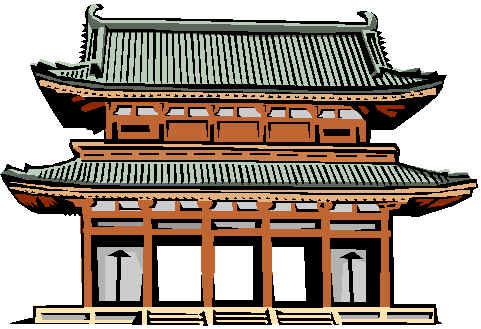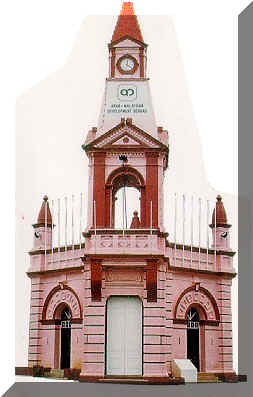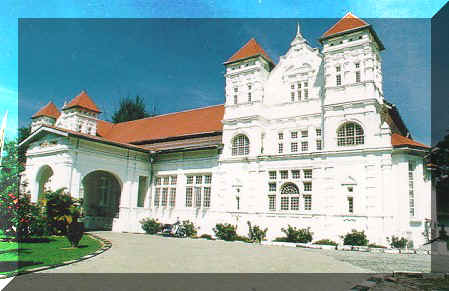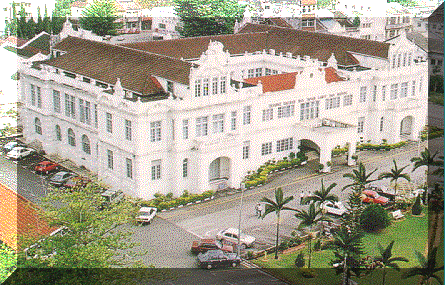|
||||||||||
| Brief
In History The town of Taiping was born out of the wars over the tin-fields of Larut district in the state of Perak. Larut was first promoted by a young adventurer named Long Ja'afar, who reportedly found tin while bathing in a stream. Long Ja'afar brought the first group of Chinese miners from Penang to help him work the mines at Klian Pauh. These miners were Hakka Chinese members of the Hai San, a Penang based Chinese secret society, led by Chung Keng Kooi. Not long afterwards, another group of miners migrated to a nearby area called Klian Baru, literally, "new mines". Oral tradition has it that the deposits were discovered when a runaway elephant which strayed into the area was found with its hooves covered in tin-rich mud. Long Ja'afar was succeeded by his son Ngah Ibrahim, known as the mentri of Larut. Around 1856, he built his fort, residence and store, now known as Kota Ngah Ibrahim, in Matang. He established the first modern system of administration in Perak, which had a police force, a judge and magistrate, a treasurer and a clerk. In 1861, a fight broke out between the miners of Klian Pauh and Klian Baru over the control of a water-course. Protracted feuding took place over the years between several groups of rival miners, from various Chinese secret societies. Consequently, Ngah Ibrahim engaged Captain Speedy and his Indian soldiers of fortune to quell the "Larut Wars", promising Speedy a salary and a share of the revenue. Pressured by Chinese merchants who had invested heavily in the tin mines, the new Governor of the Straits Settlements negotiated a treaty with Raja Abdullah and several Malay chiefs. The historic Pangkor Treaty of 1874 obliged the British-appointed Sultan to accept the "advice" of a colonial officer, and became the starting point of British intervention into the Malay States. At the same time, a separate agreement was signed with the headmen of the warring Chinese secret societies to keep the peace. From being an employee of Ngah Ibrahim, Speedy became the Assistant Resident stationed at Larut. He planned for the establishment of two towns, one called Taiping, for the Hakka Chinese, and other called Kamunting, for the rival group. It was speedy who gave the name to Taiping, which "being the Chinese for 'everlasting Peace'. With this new-found peace, miners and shopkeepers flocked to Taiping, and within a year there were 5,000 inhabitants. Larut's development was fuelled by revenue from tin duties. A four-mile road joining Taiping and Kamunting was one of the many roads that were built. In 1875, the assassination of the first British Resident of Perak, J.W.W. Birch, necessitated the British position in Perak. A punitive expedition by British troops ensued. This "Perak War" eliminated many chiefs who were hostile towards the British. Ngah Ibrahim, Sultan Abdullah and other chiefs who were implicated in Birch's murder were exiled to the Seychelles in 1877. Ngah Ibrahim never returned to Perak. He died in Singapore in 1895. By 1877, the seat of Perak's administration was moved from Lower Perak to Kuala Kangsar in Upper Perak, just south of Taiping. Several important institutions were established in Taiping, including the hospital, the police force and the survey office. Taiping's street were kept meticulously clean by the Taiping Sanitary Board. Its reputation as a salubrious town was enhanced by the cool weather, the excellent water supply and the nearby highlands. Maxwell Hill ( now called Bukit Larut) was made a hill resort for the British officers. Situated on a flat plain, from which the Gunung Hijau range rose abruptly to a height of over 5,000 feet, and only 13 miles from the coast, Taiping's location was strategic. While Taiping's early development was guided by Sir Hugh Low as Resident of Perak (1877-1899), it was during Frank Swettenham's term as Acting Resident (1884-1886) when many existing institutions such as the market, the assistant resident's house, the audit and treasury offices and the police offices were rebuilt and expanded. In 1885, the controversial 8-mile railway line from Taiping to Port Weld was completed. It was the first railway in the peninsula, and two contingents of the Ceylon Pioneer Corps were seconded by the colonial government of Ceylon for the project. By the 1890s, the Kinta Valley had superceded Larut as the principal tin-mining area in the Peninsula. The Federation Malay States, comprising Perak, Selangor, Pahang and Negri Sembilan, were formed in 1896, and Kuala Lumpur was made its capital. Taiping's importance was briefly resumed during the period of Japanese Occupation, when it became the headquarters of the Japanese military administration of Malaya and Sumartra. Many of Taiping's school buildings were turned into army bases. In August 1945, Sukarno and Mohd. Hatta, later first President and Vice-President of Republic of Indonesia respectively, flew into the Taiping aerodrome for a meeting with Dr. Burhanuddin al-Helmi and Ibrahim Yassob, leader of the organisation called KRIS to discuss the possibility of declaring the independence of Malaya jointly with Indonesia. The meeting was arranged by the Japanese military administration, which was then occupying the two countries. The plan was not carried out and Indonesia declared its independence in 1945 without Malaya. After the war, Ipoh replaced Taiping as the capital of Perak by an administrative fiat. Taiping, a town of many firsts, is one of Perak's foremost historic attractions. Its built environment, consisting of colonial buildings, public gardens, old roadside trees and shophouse ensembles, tells the story of its development from 1874 to the present. This remarkable heritage, together with the town's exceptional climate and tranquil Taiping its reputation as the town of everlasting peace. Further reading: Khoo Kay Kim, Taiping (Larut): The Early History of a Mining Settlement.
. |
|
|||||||||


 Initially
built of timber in 1881. The fortified clocktower, with chamfered slits for guns, was
probably erected some years later. The police station doubled as a fire station. The first
fire bridge in the federation of Malay State was made up of members of the Perak Armed
Police and later the Malay States Guides.
Initially
built of timber in 1881. The fortified clocktower, with chamfered slits for guns, was
probably erected some years later. The police station doubled as a fire station. The first
fire bridge in the federation of Malay State was made up of members of the Perak Armed
Police and later the Malay States Guides. The
Perak Museum, the first in the country, was started in 1883 in the former government
offices. The building was developed in stages from 1886 to 1903. The first curator was
Leonard Wray, who built up the much admired natural history and ethnological collection.
The
Perak Museum, the first in the country, was started in 1883 in the former government
offices. The building was developed in stages from 1886 to 1903. The first curator was
Leonard Wray, who built up the much admired natural history and ethnological collection. This
"imposing Victorian styled block of offices" was opened in 1898. The Government
Offices building "which is well designed and constructed, was commenced in 1895, and
provides accommodation for a Council Chamber, and Office for the Secretariat, Treasury,
Audit, Education, and Forest Departments. The estimated cost is $83,750." Today it is
the premises of the Larut-Matang District Office.
This
"imposing Victorian styled block of offices" was opened in 1898. The Government
Offices building "which is well designed and constructed, was commenced in 1895, and
provides accommodation for a Council Chamber, and Office for the Secretariat, Treasury,
Audit, Education, and Forest Departments. The estimated cost is $83,750." Today it is
the premises of the Larut-Matang District Office.